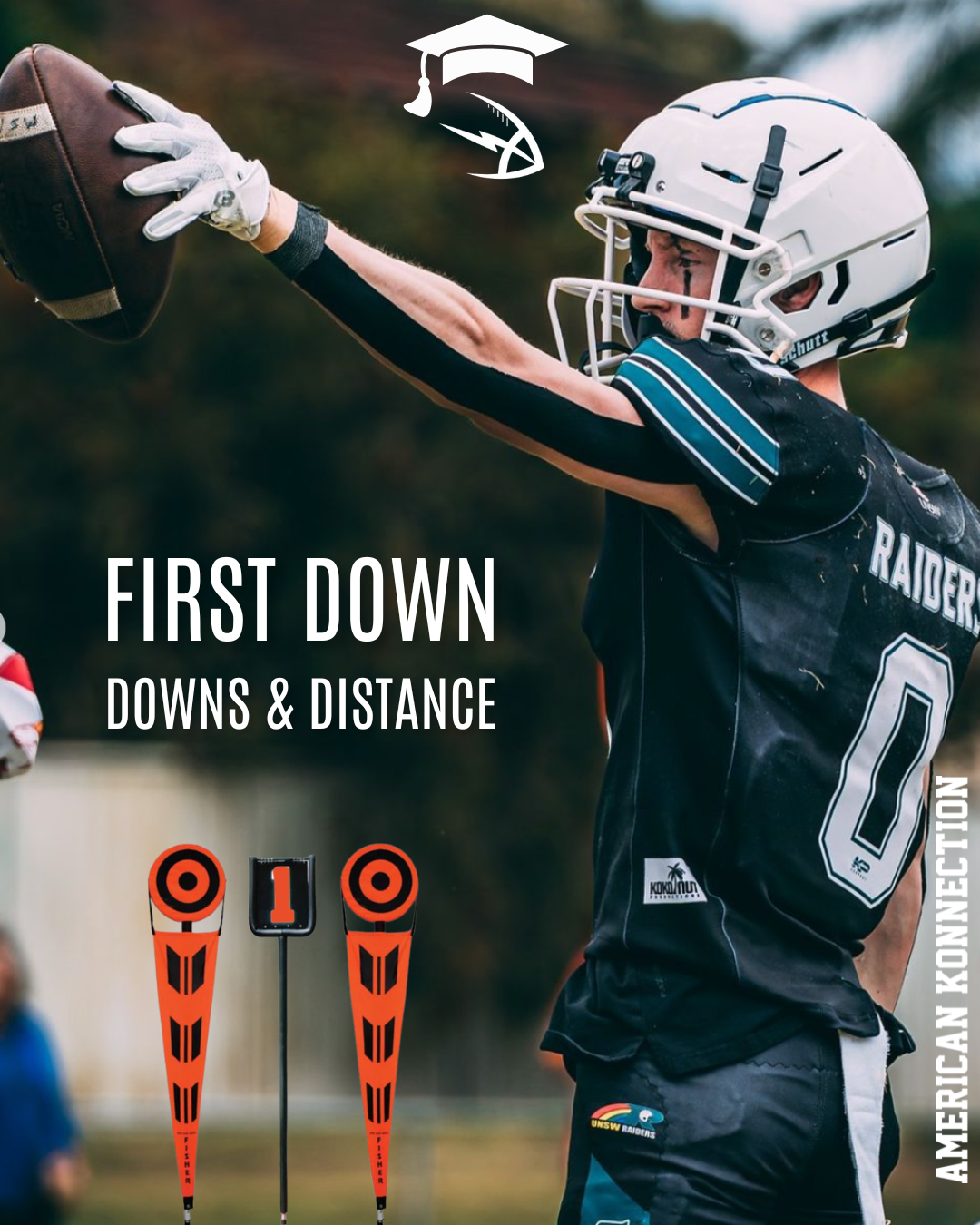In American football, downs and distance are the system that determines how the offense keeps possession of the ball and advances toward the end zone. It’s one of the core rules of the game.
What is a Down?
-
A down is essentially a play or attempt to move the ball forward.
-
The offense has four downs (tries) to advance the ball at least 10 yards.
-
Each play starts with a down and ends when the ball carrier is tackled, goes out of bounds, or a pass is incomplete.
What is Distance?
-
Distance refers to how many yards the offense needs to gain for a new set of downs.
-
At the start of a series, the distance is 10 yards (called 1st and 10).
-
If the offense gains 4 yards on their first play, it becomes 2nd and 6 (because they need 6 more yards to reach 10).
How It Works
-
First Down (1st and 10)
-
At the start of a possession, the offense has 1st down with 10 yards to go.
-
Example: 1st and 10 at the 25-yard line.
-
-
Progressing the Downs
-
If they gain 4 yards, the next play is 2nd and 6.
-
If they then gain 3 yards, it becomes 3rd and 3.
-
-
Fourth Down Decision
-
If the offense hasn’t reached the needed 10 yards by 4th down, they usually:
-
Punt the ball away (kick it to the other team) to avoid turning it over in a bad spot.
-
Kick a field goal, if close enough to the goalposts.
-
“Go for it” and try to gain the needed yards, risking a turnover if they fail.
-
-
-
Resetting the Downs
-
If the offense gains the full 10 yards (or more) within their four downs, they earn a new set of 1st and 10.
-
Example
-
1st & 10 at the 20-yard line → QB completes a 7-yard pass.
-
Now it’s 2nd & 3 at the 27-yard line.
-
RB runs for 5 yards. That’s more than 3 yards, so it’s a new 1st & 10 at the 32-yard line.
👉 In short: Downs and distance is the system that keeps the game moving — the offense must earn 10 yards in 4 tries, or the defense takes over.


Share:
Best Positions for Your Body Type: American Football